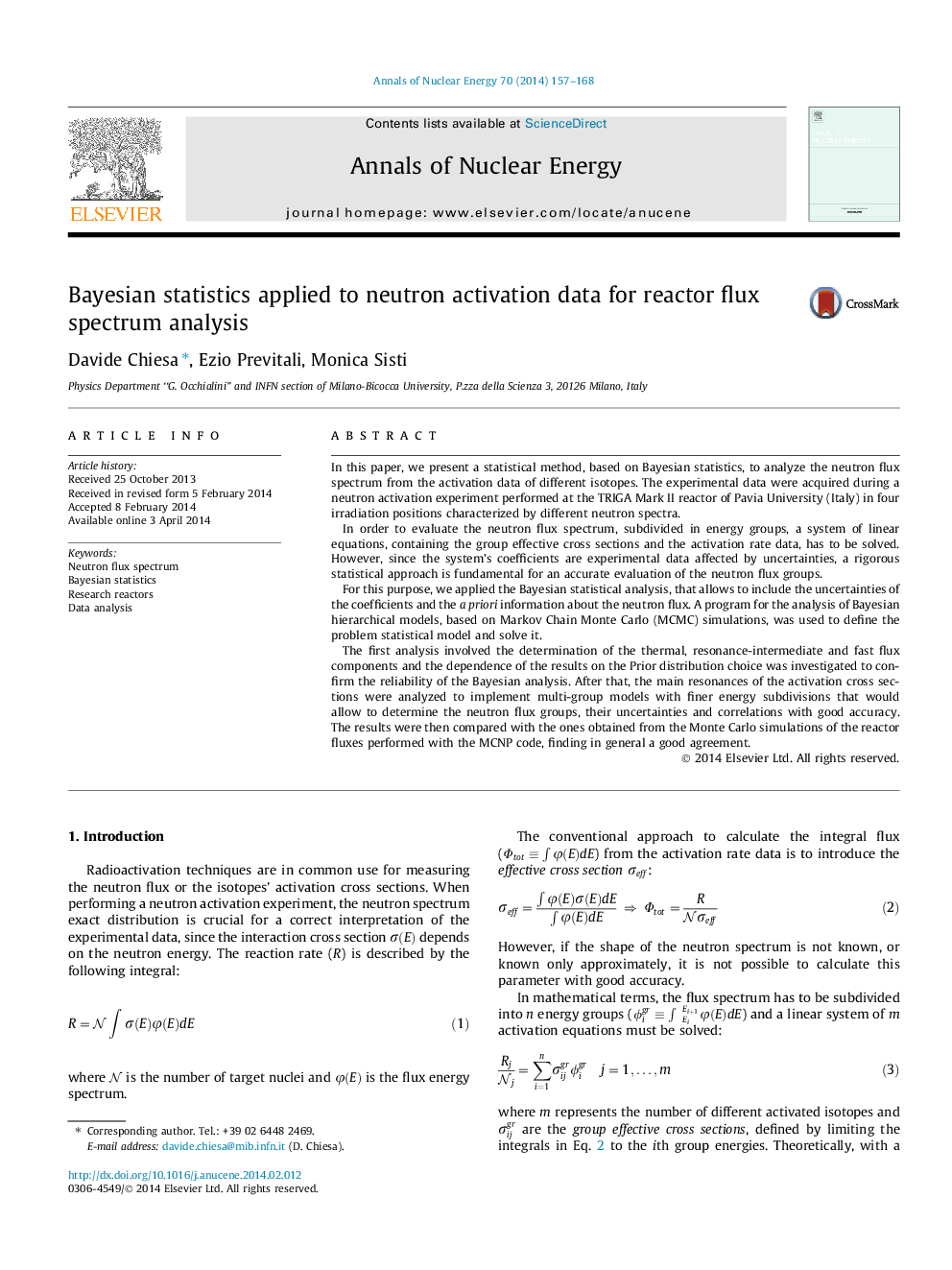| Article ID | Journal | Published Year | Pages | File Type |
|---|---|---|---|---|
| 1728322 | Annals of Nuclear Energy | 2014 | 12 Pages |
•Bayesian statistics to analyze the neutron flux spectrum from activation data.•Rigorous statistical approach for accurate evaluation of the neutron flux groups.•Cross section and activation data uncertainties included for the problem solution.•Flexible methodology applied to analyze different nuclear reactor flux spectra.•The results are in good agreement with the MCNP simulations of neutron fluxes.
In this paper, we present a statistical method, based on Bayesian statistics, to analyze the neutron flux spectrum from the activation data of different isotopes. The experimental data were acquired during a neutron activation experiment performed at the TRIGA Mark II reactor of Pavia University (Italy) in four irradiation positions characterized by different neutron spectra.In order to evaluate the neutron flux spectrum, subdivided in energy groups, a system of linear equations, containing the group effective cross sections and the activation rate data, has to be solved. However, since the system’s coefficients are experimental data affected by uncertainties, a rigorous statistical approach is fundamental for an accurate evaluation of the neutron flux groups.For this purpose, we applied the Bayesian statistical analysis, that allows to include the uncertainties of the coefficients and the a priori information about the neutron flux. A program for the analysis of Bayesian hierarchical models, based on Markov Chain Monte Carlo (MCMC) simulations, was used to define the problem statistical model and solve it.The first analysis involved the determination of the thermal, resonance-intermediate and fast flux components and the dependence of the results on the Prior distribution choice was investigated to confirm the reliability of the Bayesian analysis. After that, the main resonances of the activation cross sections were analyzed to implement multi-group models with finer energy subdivisions that would allow to determine the neutron flux groups, their uncertainties and correlations with good accuracy. The results were then compared with the ones obtained from the Monte Carlo simulations of the reactor fluxes performed with the MCNP code, finding in general a good agreement.
